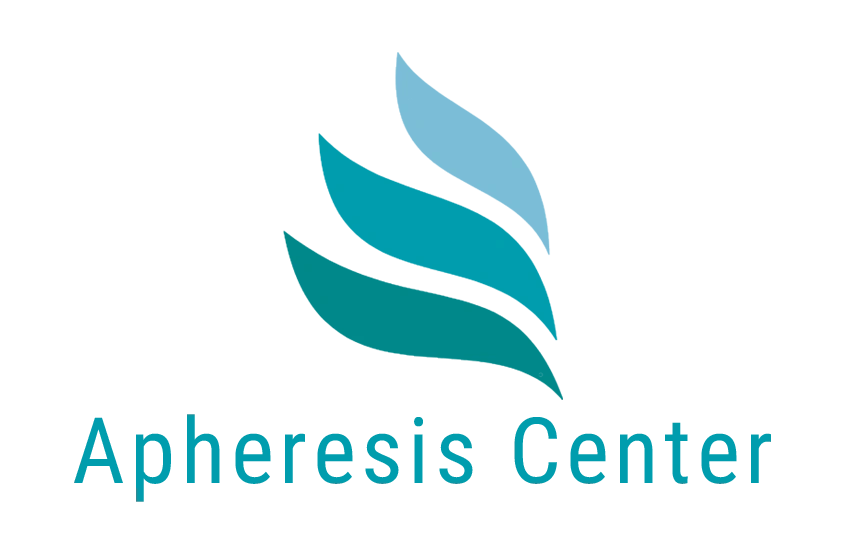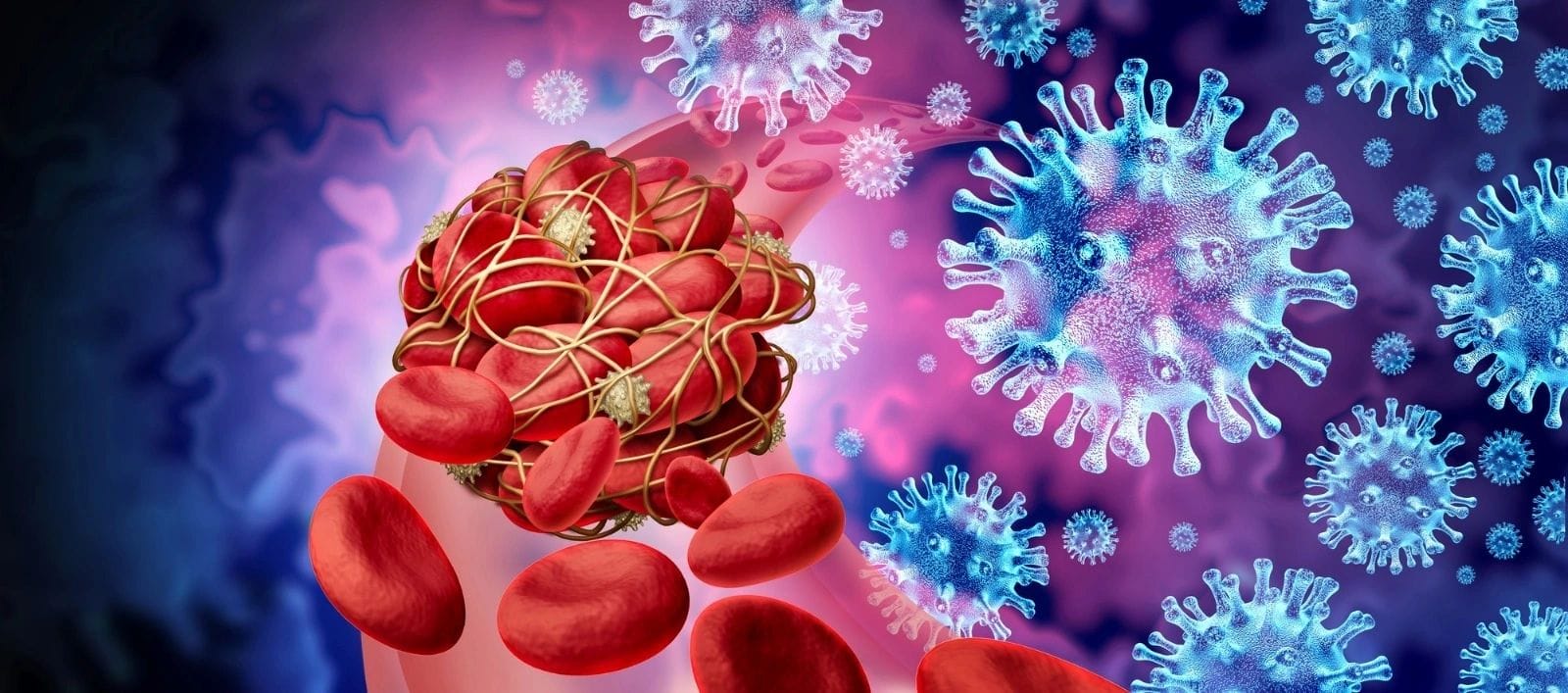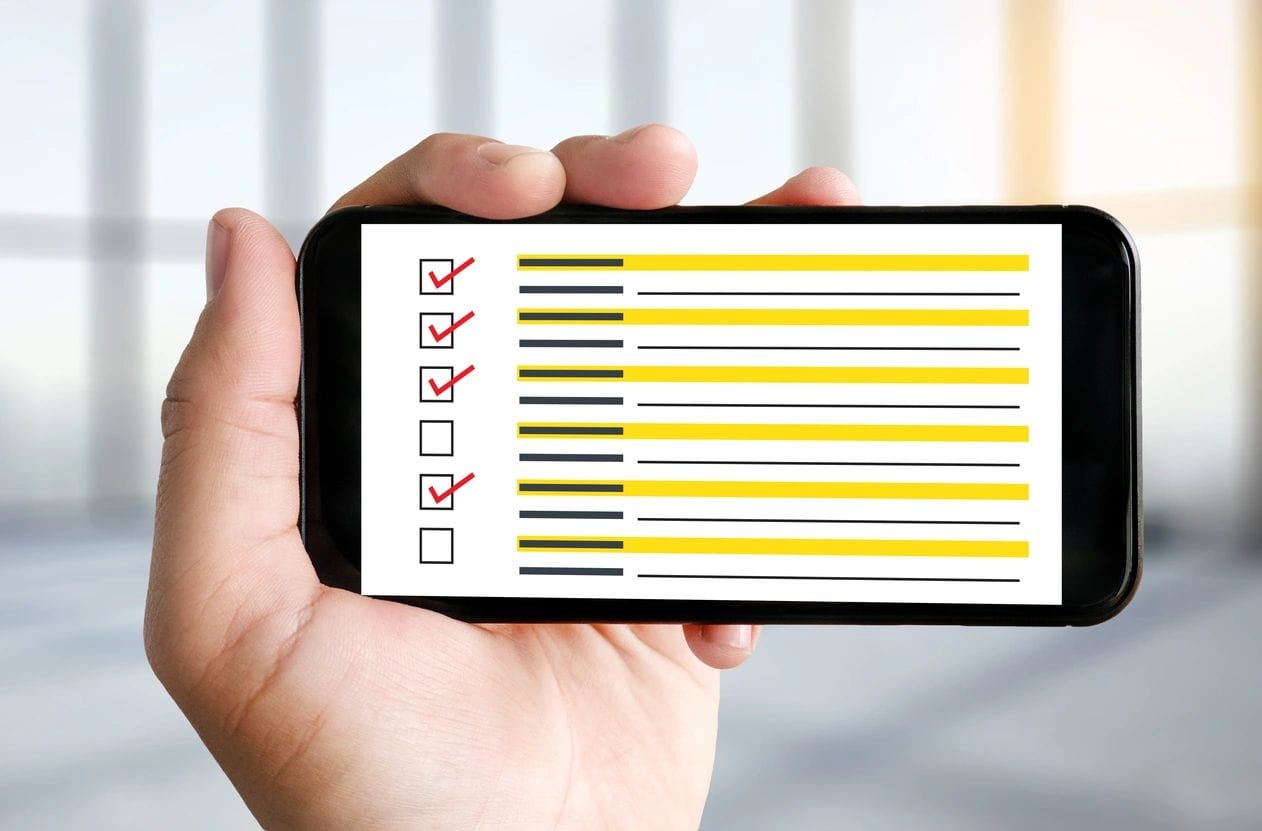Autor: S. Margalit
While the COVID-19 pandemic’s grip has loosened, millions worldwide grapple with long-term effects. A recent JAMA Network report estimates 7% of US adults, or nearly 18 million, experience Long COVID. Scientists pinpoint microscopic blood clots as a potential culprit. I spoke with Markus Klotz, co-founder of the Apheresis Center in Larnaca, Cyprus, and a former Long COVID patient himself, to delve deeper into the condition and their promising treatment protocol.
Markus, many Long COVID patients struggle despite seeming recovery. What’s the cause?
"In einfachen Worten: Wie die meisten Menschen bereits wissen, hat das COVID-19-Virus eine runde Form, die mit Stacheln bedeckt ist, man kann sich das Virus wie ein Stachelschwein vorstellen. In einigen Fällen verbleibt, auch wenn der Patient von der Virusinfektion geheilt ist, eine beträchtliche Anzahl von Stacheln, die sich vom Viruskörper gelöst haben, im Blutkreislauf und im Körper des Patienten.
Diese Stacheln verfangen und verheddern sich in einem Protein namens Fibrinogen. Der Name verrät, dass Fibrinogen die Form einer Faser hat. Fibrinogen bindet die Blutplättchen im Falle einer Verletzung zusammen, indem es ein Netz aus Fasern bildet, das die Blutplättchen bindet und sie an der Stelle fixiert, an der die Verletzung aufgetreten ist.
Once a COVID-19 spike gets caught in a fibrinogen net, it weakens its strength and flexibility. The fibrinogen net gets broken and pieces of it start circulating the blood stream creating fibrin aggregates, so called microclots that researchers have found to cause quite a substantial amount of symptoms. Especially as they include amyloid proteins which makes them extremely hard to dissolve. Of course in many cases there are other processes involved – often downstream of the microclots/hypercoagulation – hyperinflammation, autoimmune processes and neurological issues.”
Wie kann ich wissen, ob ich Microclots in meinem Blut habe?
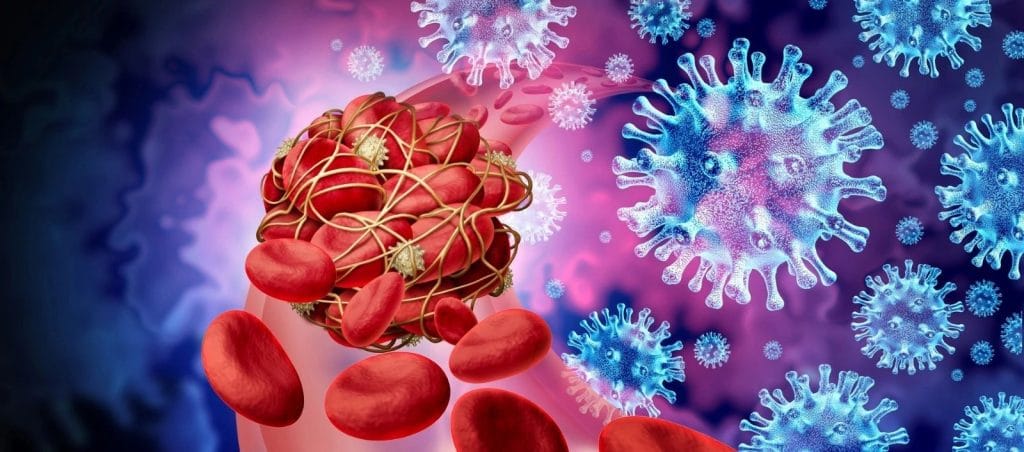
“I recommend you first consult your doctor. There is a few research laboratories that test for microclots and endothelial damage. You can also take the online diagnostic screening questionnaire test available on our website, developed by our medical advisor Dr. Gustavo Aguirre-Chang. By now though we have more accurate molecular diagnostic tests – spike protein persistence tests that show where spike remains in the patients’ system – in the serum, the exosomes or the immune cells.”
Was sind die Symptome, die Patienten erleben?
“The National Healthcare Service in the UK (NHS UK) has published a few symptoms like extreme tiredness (fatigue), shortness of breath, problems with your memory and concentration (“brain fog”), heart palpitations, dizziness and joint pain and muscle aches. For so many patients we meet here in our clinic, the symptoms are so severe that they are bedridden close to 23 hours a day, but there is also many that have more mild versions but are still struggling a lot to live a normal life.”
When Markus fell ill at the end of 2020 after contracting Covid and his life was taken away from him through a severe case of Long Covid, he, his family and friends already had lost hope of a recovery when a therapy in Mülheim, Germany brought him back to life again. Dr. Beate Jaeger treated him with H.E.L.P. Apheresis for Long Covid. He was patient Nr. 14 in her published case study.
Können Sie unseren Lesern bitte Ihre persönlichen Erfahrungen mit Long COVID mitteilen?
“I was bedridden, constantly fatigued, with terrible muscle aches. The slightest exertion left me breathless, and my mind felt perpetually foggy. I couldn’t even watch TV or read the news. Depression and anxiety weighed heavily. No doctor could diagnose or offer any treatment. Joining Dr. Jaeger’s H.E.L.P. Apheresis study became my lifeline “
After his recovery, Markus took upon himself a mission to make the treatment available for more patients and together with his best friends Constantinos Georgiou and Silke Fischer with the support of Dr. Beate Jaeger opened the Apheresis Center in Larnaca with Dr. Irina Pavlik Marangos, who leads the medical team as the Medical Director. Utilizing their clinical experience and cooperating with doctors and researchers from all over the world, they developed ‘The Cyprus Protocol’, a combination therapy to treat Long COVID and other chronic conditions”
Markus, was macht die Kombinationstherapie mit H.E.L.P. Apherese so effektiv bei der Behandlung von Patienten mit Long COVID?
"Regelmäßige Apherese-Verfahren werden auf der ganzen Welt eingesetzt, um die verschiedenen Blutbestandteile zu trennen. Bei der Spende von Blutplättchen zum Beispiel wird der Spender an eine Apherese-Maschine angeschlossen, die die Blutplättchen herausfiltert, während die übrigen Blutbestandteile in den Blutkreislauf zurückgeführt werden. Das Gerät funktioniert wie ein Sieb: Je kleiner die Löcher sind, desto mehr Bestandteile kann es herausfiltern. Leider sind virale Spike-Proteine wie COVID-19 und Microclots so winzig, dass sie durch die üblichen Filter der Apherese-Maschinen passen.

However, H.E.L.P. Apheresis works differently. Instead of using mechanical components to filter the blood, H.E.L.P. Apheresis cleans the blood using several chemical solutions and processes, literally making the machine a “live laboratory”. First it separates the plasma from the rest of the blood. Then injecting an acetate buffer it turns the plasma’s acidity level to 5,2 pH, creating an environment in which spike proteins, pathogenic proteins and microclots and other toxins and pathogens irreversibly bind to the now injected heparan sulfate, a form of heparin. This process is called precipitation – the solidified ‘precipitate’ remains in a filter-like structure (precipitation filter) with a surface size of over two football fields. The clean plasma is then going through a counter-dialysis with bicarbonate to normalise the pH value again and after that through ultrafiltration/a heparin adsorber and is finally warmed up to body temperature and returned to the bloodstream together the rest of the blood components.
Most forms of Apheresis procedures are very different and therefore less efficient – a selective absorber or precipitation seems to be key.”
Und hilft die H.E.L.P. Apherese wirklich?
"Wir beobachten hier in der Klinik eine Erfolgsquote von 80 %. Selbst bei Patienten, die aus irgendeinem Grund nicht alle empfohlenen H.E.L.P. Apherese-Runden absolvieren können, beobachten wir eine deutliche Verbesserung. Viele Patienten berichten von großen Erholungssprüngen, wenn sie wieder zu Hause sind. Es hängt alles von der Schwere der Erkrankung ab."
Ich muss sagen, dass Markus leidenschaftlich über Long COVID und H.E.L.P. Apherese spricht, aber als ich ihm die nächste Frage stellte, strahlte er regelrecht.
Aber H.E.L.P. Apherese ist nicht die einzige Behandlung, mit der Sie Patienten in der Klinik behandeln?
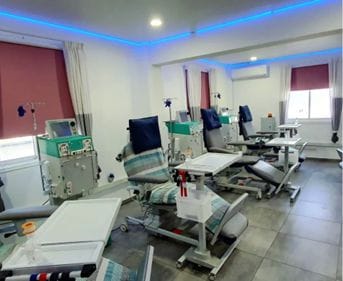
“H.E.L.P. is the crown jewel of the treatment as it is the core part of ‘The Cyprus Protocol’ we use in the clinic. It’s a combination of several different therapies designed to clean the blood from microclots, support the recovery process and provide the patient with means to prevent the next infection.
It includes clinical nutrition supervision, IV therapy, antiviral medications, IVIG IgM enhanced therapy, hyperthermia, hyperbaric oxygen therapy, immunoadsorption therapy and post treatment support by a health coach. Each treatment plan is tailored by Dr. Irina Pavlik Marangos and our clinical nutritionist and clinical director Chryso Zorbas. While not every patient will be undergoing all the treatments, specific combinations of some of them are ‘doing wonders’ for Long COVID and Post Vac, as well as for chronic illness patients”
Ich verstehe, dass Sie auffällige Ergebnisse sehen. Warum wurde die Behandlung dann noch nicht von einer Gesundheitsbehörde auf der ganzen Welt zugelassen?
"Die klinischen Studien zu Long Covid haben gerade erst begonnen. Wenn Sie sich zum Beispiel die Website des NHS UK genau ansehen, werden Sie feststellen, dass sie nur Hilfe bei der Bewältigung der Symptome bieten, nicht aber eine wirkliche Behandlung oder Heilung. Wir gehen davon aus, dass die klinischen Studien und die Zulassungsverfahren bis mindestens 2030 dauern werden. Was sollen Long COVID Patienten bis 2030 tun? Im Bett liegen und warten?"
“Every treatment we offer our patients is clinically approved by health agencies around the world and considered as safe, they are just not labelled as ‘Long Covid or Post Vac treatments’ yet.”
Sie wollen die Behandlungen leichter zugänglich machen, warum also Zypern?
“Well, the answer lies in your question. The operating costs for a clinic like ours are higher in the rest of the European Union or in the USA for example, thus letting us provide the treatments at a better cost. 70 direct flights and English language are just two more of the long list of reasons we chose Cyprus. The island itself has a high standard private health infrastructure. I have to say that the beautiful view of the Mediterranean and the sunny blue sky also help our patients recovery. I like what Stephen, one of our patients said: ‘We managed to blend German efficiency and Cypriot hospitality at our clinic.”
Abschließend Markus, gibt es irgendetwas, das Sie anderen Patienten mit Long COVID, Post-Vac oder chronischer Krankheit da draußen sagen möchten?
Markus hält ein paar Sekunden inne und antwortet mit einem gefühlvollen Gesichtsausdruck
“For me the worst part was the mental part, not knowing what you really have is devastating, but my message as a former patient to other patients is don’t lose hope! Speak to your doctor, ask for available treatments and don’t lose hope. We also provide free consultation to patients from all over the world and you are welcome to do that too.”
